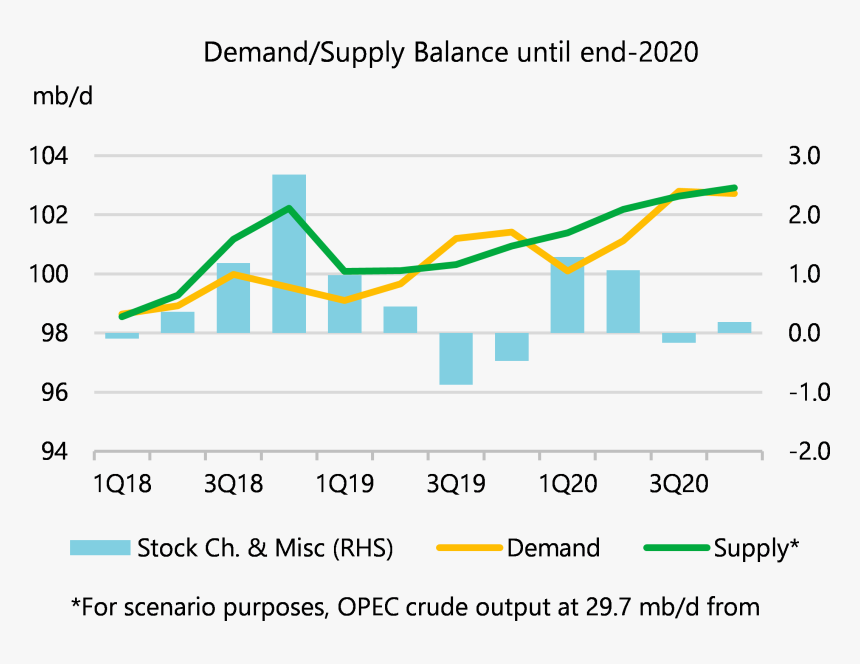
The elimination of cost redundancies can relate to processes, personnel, maintenance and operation of capital, distribution, and marketing. Combining the best practices of the different entities and driving more volume through processes create scale efficiencies. Combining the purchasing power of two or more entities, and the transparency of actual costs and prices paid by the different entities drives negotiating leverage over suppliers and partners. When two different entities bring together disparate, but complementary assets, they often create synergies. Synergies may not necessarily have a monetary value but could reduce the costs of sales and increase profit margin or future growth. In order for synergy to have an effect on the value, it must produce higher cash flows from existing assets, higher expected growth rates, longer growth periods, or lower cost of capital.
- For example, smaller companies generally have to pay a premium when borrowing money relative to larger companies.
- In a narrower scope, synergy can also occur at the individual or division level.
- Marketing initiatives require a lot of trial and error, so merging two companies can significantly reduce the time and money that companies spend trying out different marketing strategies on their own.
- As an end result of the multiple marketing channels achieved by synergies, hopefully, the company will be able to expand its customer base.
- As a result, the company’s goods and services may decline in quality, there may be a reduction in operational efficiency, and there may be poor resource utilization.
Cost reduction is a simpler way to achieve synergy, it is achieved through economies of scale and lower unit prices. Companies increase the specialization of labor and management, which helps to use equipment more efficiently. With marketing synergies, the newly formed company can enjoy new marketing benefits for their product or service. A firm must understand the different types of synergies and their effects to optimize their M&A deals. The logic tree, on the previous page, can serve as a great starting point to brainstorm some potential synergies between two or more entities. As you brainstorm, also evaluate, at a high level or level of magnitude, the potential value, and difficulty in realizing the synergy.
Heuristic evaluations, Conducting a Heuristic evaluation, Benefits of Heuristic evaluations
Marketing synergy refers to the marketing benefits that two parties in an M&A transaction may enjoy when promoting their products and services. These synergies include information campaigns, marketing tools, research and development, as well as marketing personnel. Corporate synergy refers to the benefits that two firms are expected to gain when they merge or when one firm acquires another. The synergistic effect of such transactions often forms the basis of the negotiations between the seller and the buyer.
The ability of a management team to identify and extract the expected synergies plays a major role in the success or failure of an acquisition. Consolidation in the industry will continue, even in the face of increasing rates, because the financial opportunities far outweigh increased borrowing costs in the short term. A very richly-valued acquisition can appear moderately priced after taking into account the impact of revenue and cost synergies post close. Spin-off and carve-out deals are another type of restructuring deal, where a company separates a business unit or subsidiary from its parent company. The drivers of these synergies depend on the motivation, timing, and structure of the separation. To estimate and evaluate these synergies, analysts typically use valuation methods such as the sum-of-the-parts (SOTP) model, the relative valuation method, or the pro forma analysis.

Here are some of the best practices for evaluating synergies and realizing their value. Or, the flip side happens when a large company acquires a small company with established distribution and presence in an emerging market. The large company can leverage the small company’s established distribution and presence in the emerging market. Two market leaders that merge can also create revenue synergy by restricting supply and increasing prices. I’m going to save you the time and money of sitting through a ten-week MBA course on mergers & acquisitions (sorry Professor Thorburn).
How to Create an M&A Synergy Model
Whenever considering any investment, partnership, or consolidation, the evaluation should focus on the potential revenue, cost, capital, and other financial synergies. The potential synergy is considered when two companies are planning to merge types of synergy or a large company is planning to acquire its smaller competitor and thereby increase the efficiency of its operations. The expected synergy is measured in terms of the potential to increase revenues, add technology, or to reduce costs.
Remote Health Monitoring Market 2023, Growth, Share, Types and Key Players Fitbit, Apple Health, Philips Hea – openPR
Remote Health Monitoring Market 2023, Growth, Share, Types and Key Players Fitbit, Apple Health, Philips Hea.
Posted: Tue, 08 Aug 2023 08:11:00 GMT [source]
Synergies not only provide that short-cut, but also offer an excellent means through which the benefits of the deal can be communicated to shareholders and investors. Since the PV of Synergies is higher than the Control Premium Paid, the value created is 60 million. When customers receive information about a company through different messaging pathways, the brand has greater influence, and they are more likely to engage with the brand. To get you going on understanding the full breadth of synergies for a new project, product, service M&A, or consolidation, download the free Synergy PowerPoint Worksheet.
Become your own success story with DealRoom!
Additionally, supply chains can become more efficient and the new, larger company can usually negotiate better prices from suppliers. More specifically, McKinsey & Company notes challenges, such as developing appropriate targets and executing new workflow and sales strategies across all functions, make revenue synergies more difficult to capture. Synergy often involves two entities or parts with complementary resources or capabilities. It then brings mutual benefits, especially when joint work or activities support the same goal. Be cautious when evaluating financial synergies, however, as studies have demonstrated that these synergies tend to be illusive. A firm can use multiple earnings (like EV/EBIT) to represent the long-term growth rate of synergies.
Synergies may arise in M&A transactions for several reasons, such as cost savings due to operational efficiencies or revenue upside due to more productive use of assets. Below is a non-exhaustive list of potential types of synergies that a company may face. A revenue synergy is when, as a result of an acquisition, the combined company is able to generate more sales than the two companies would be able to separately. However, in the combined company, LKQ could leverage its existing distribution network and sales force to sell more aftermarket parts into the industry than Keystone could sell as a stand-alone organization. Shareholders will benefit if a company’s post-merger share price increases due to the synergistic effect of the deal. The expected synergy achieved through the merger can be attributed to various factors, such as increased revenues, combined talent and technology, and cost reduction.
For example, Company X had revenue of $45 million, and Company B had revenue of $30 million. Now that we understand the definition of synergies and their relation to M&A transactions, we can discuss the different types of synergies. Workplace synergy is when employees work together to create a more productive working experience. This can include areas such as feedback, clearly defined goals, performance-based compensation, and overall teamwork to tackle problems that would be more impactful than if done alone. This team formation could result in increased capacity and workflow and, ultimately, a better product than all the team members could produce if they work separately.
City of Dreams Mediterranean targeting Middle East, North Africa … – Asia Gaming Brief
City of Dreams Mediterranean targeting Middle East, North Africa ….
Posted: Wed, 02 Aug 2023 23:11:11 GMT [source]
In fact, looking for synergies in a company’s existing operations and partnerships is an excellent way to generate value. For example, pooling some resources with a trusted and non-competing partner is one such way of doing so. Even if there are synergies to be achieved through a deal, the consideration paid for the acquisition has to be low enough to benefit from them. So, if the synergies are estimated at $100M, and the acquisition price is $200M over the market price, the deal will still almost certainly be value destructive in the long run.
Financial Synergies
Almost all value generating M&A transitions have synergy at their core (hence the reason why it’s the favoured motive of chief executives to justify their deals). The Disney acquisition of Pixar (and later, Marvel) may be the textbook example for finding good synergies, but for the sake of variation, the Facebook acquisition of Instagram in 2012 also takes some beating. The integration phase of anM&A transaction is essentially about getting to the synergies of the deal as quickly as possible. There is now universal agreement that, where integration is concerned, speed is everything.
- There is now universal agreement that, where integration is concerned, speed is everything.
- In business terms, however, though companies may aim to achieve synergy by joining forces, the end result often lacks synergy, making the endeavor a wasted one.
- All in all, revenue, cost, and financial are the three most common acquisition synergies examples.
- Companies increase the specialization of labor and management, which helps to use equipment more efficiently.
- With marketing synergies, the newly formed company can enjoy new marketing benefits for their product or service.
Finally, when trying to capture different types of synergies, company leaders must find a way to track the progress of the different synergies involved in their deal. To achieve synergy, be sure all stakeholders and team members stay focused on the predetermined objective throughout the M&A process. And if two companies that generate great synergies are just able to ‘fit together perfectly’, the companies that don’t fit together – and seem like they never can – are the ones that destroy value. We’ve opted for the Quaker Oats and Snapple deal, because on the surface, it may have seemed to make sense in several ways (analysts were in unison on it being a good deal, pre-close). Streamlined processes can save time and money as they have the potential to make the new company more efficient.
This could result if the merged firms experience problems caused by vastly different leadership styles and corporate cultures. When two companies merge, there is no longer a need to pay two salaries for each position. Merged companies have more access to supply chains, making this process more cost-efficient. Revenue synergy refers to the additional revenue that companies generate after merging.

By achieving synergies, merged firms can profit by realizing results such as increased revenue and market share, a reduced tax burden, or combined technology. For buyers it is even more important to clearly understand the potential synergistic benefits of an acquisition prior to a close. Clear insight into both revenue and cost synergies drives a conversation around valuation.
Beyond the complexity that often gets in the way of realizing synergies, there are often difficulties in realizing revenue synergies. As you assess revenue synergies, it is critical to look at the synergies from the view of a customer. As you think about revenue synergies, you have to think through if it makes sense from a customer perspective. And, to understand the potential fit and value, you can always conduct focus groups and surveys to understand the customer perspective on potential synergies. The term synergistic is derived from synergy, which refers to the benefit that results from the merger of two agents who want to achieve something that neither of them would be able to achieve on their own.

There are many examples of successful company mergers and acquisitions, and the reason behind their success is the identification of synergies early on. Such strategic actions create economies of scope by exploiting each party’s resources and capabilities. On the other hand, when the newly combined companies do not work in harmony, this can create new conflicts. As a result, the company’s goods and services may decline in quality, there may be a reduction in operational efficiency, and there may be poor resource utilization.
